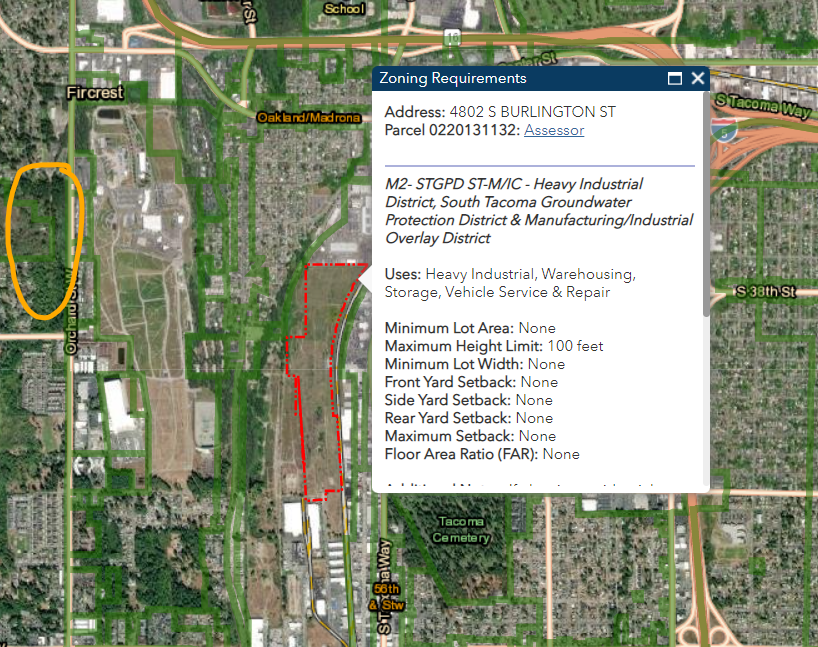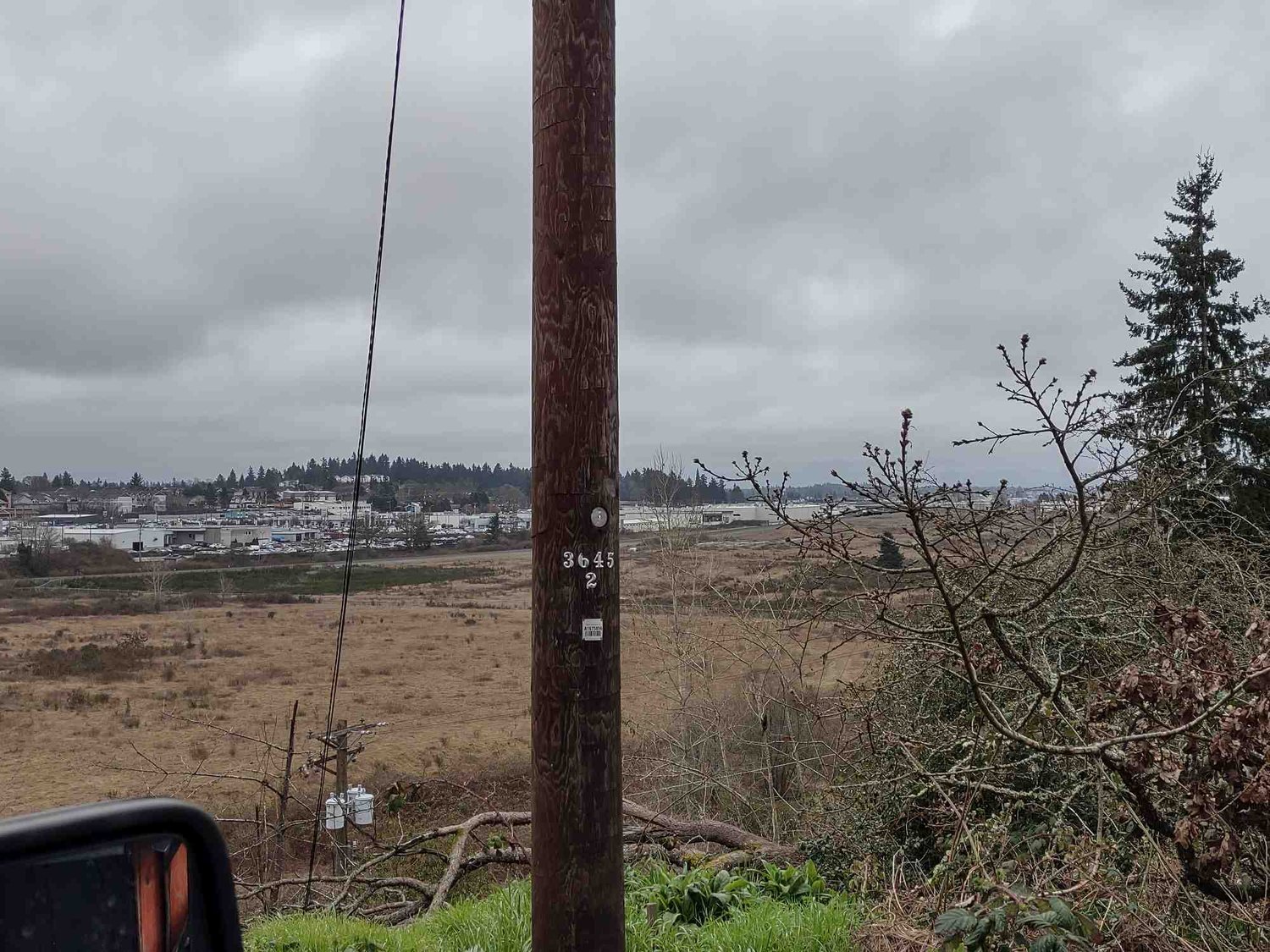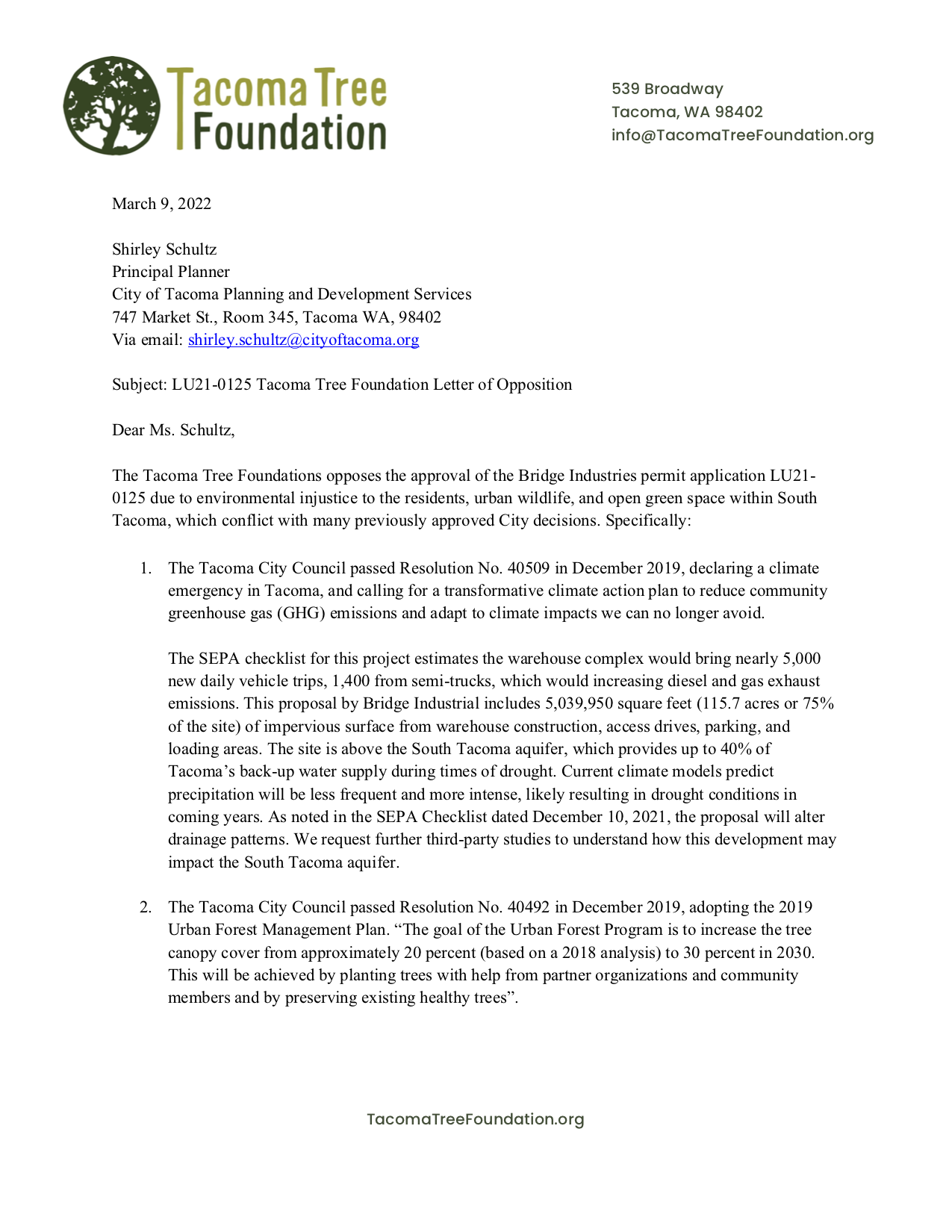A Tale of Two Cities
Two proposed projects within a mile of each other, in Fircrest and South Tacoma, highlight how different city policies are affecting tree coverage and quality of life in neighboring communities.
Tacoma and Fircrest. Fircrest and Tacoma.
How different you think these places are probably depends on how much local history you know and which side of the city limits you live on. Tacoma and Fircrest are on Puyallup and Coast Salish territory. Though run by separate governments, they share a lot of infrastructure, including electricity, public schools, and of course the urban forest! Fircrest and South Tacoma are also part of the same watershed, which Pierce County identifies as the Chambers-Clover watershed. So despite being governed by different laws, these neighborhoods are intimately connected through the physical environment as well as the people who live there.
Still, those different histories and regulations have led to very different outcomes in terms of tree coverage and who benefits from it. And two recent proposals within Fircrest and Tacoma show that these municipalities remain on opposite trajectories when it comes to tree coverage.
Pictured above: An aerial photo from 1927 featuring what was affectionately known as the “South Tacoma Swamps” courtesy of the Tacoma Public Library and a modern day view of South Tacoma courtesy of Google Maps.
Let's start with Fircrest, which has a 26.5% tree canopy coverage and an apparent goal of 40% (according to www.treeequityscore.org). A draft tree canopy map from 2020 shows a number of Fircrest's namesake forested areas. The lack of detail in the map suggests that the city government is in the early stages of studying tree canopy and developing policies to grow it.
In one highly forested area, the steep slopes and wetlands along Leach Creek, the City of Fircrest is studying whether it makes sense to buy 32 acres of property to preserve as parkland and open space. The City is working with the nonprofit Forterra to negotiate the sale and identify grant opportunities to fund the purchase. A deal like that would be designed to preserve the air and water quality in the immediate vicinity while guaranteeing people access to recreation in a wooded area. It's the kind of move that cities do when they recognize that trees are part of the essential infrastructure that make communities healthy and livable.
Meanwhile, less than a mile to the east, a different kind of story is unfolding. A large parcel of open space, zoned by the City of Tacoma for industrial purposes, has been sold to a developer that wants to build some very large warehouses in South Tacoma. A former BNSF railroad property, this area has a complex history that includes a lot of toxic pollution in the wetland—enough to earn the EPA's designation as one of Tacoma's many "superfund" sites.
Fircrest tree coverage vs. poverty rates
Pictured above: BNSF superfund site in South Tacoma
Many community members are opposing this project, which would convert a great deal of open space—where bald eagles and coyotes can be spotted—into "impervious surfaces" like roofs and parking lots that increase stormwater run-off into the Salish Sea. Truck traffic and diesel pollution would increase. Complaints are being met by mixed messages about what the impacts will be to water, air, and wildlife and which agency—City of Tacoma or Tacoma-Pierce County Health Department—is in charge of conducting the required environmental reviews. While some suggest that this private sale of private property in an industrial area means the City of Tacoma has little legal power to stop it, the project clearly conflicts with many of the City's stated goals on climate, anti-racism, environmental justice, and public health. If you like details, the Tacoma Tree Foundation's board of directors recently submitted a comment letter detailing an array of grounds for opposition.
Tacoma's Unfair Forest
But even Fircrest's "firry" reputation is complicated when we look at where most of the trees are located and who is reaping the physical, social, and economic benefits they offer. In short, the areas where more people of color and people with low incomes are living have less tree coverage and are therefore hotter. This mirrors what the City of Tacoma has learned by comparing data from its 2018 tree canopy inventory to its Equity Index. In results that were published last year, the City found that areas of low social and economic opportunity had 15% less tree coverage on average than high-opportunity areas. When we consider that Tacoma's tree coverage is only 20% overall, that 15% disparity looks even more dire, the result of targeted and systematic disinvestment over generations. And projects that involve clearcutting forests for views or development appear all the more inexcusable.
Disparity in tree benefits, which is widespread in U.S. cities because of our history of racist development patterns, can be summed up in one term: the unfair forest. And you can see just how stark these differences are by using tools like American Forests' Tree Equity Score, which breaks down all the data by census block and shows how many trees would have to be planted to attain tree equity across Tacoma and Puget Sound. (Hint: it's a lot.)
Tree equity index for Fircrest & South Tacoma
So even though Tacoma and Fircrest both have a lot of work to do to reach tree equity, it's hard to avoid the conclusion that these cities are on two different trajectories when it comes to tree canopy and public health. One is looking to preserve tree canopy coverage to ensure future benefits for the community. The other seems to be ignoring the community in order to facilitate new industrial development in support of the regional warehouse boom, instead of looking for ways to seek environmental justice and welcome green industry.
No matter what neighborhood you may live in, it is up to citizens to speak up about what kind of projects we are against, as well as what we are for. We need more people to stand up for equitable processes as well as outcomes. And we need to hold our leaders accountable for not reaching their stated climate and tree canopy goals. That's the only way we'll guarantee a fairer forest for the future.
Read the letter from our Board President, Jess Stone, to Tacoma’s Principle Planner, Shirley Schultz.
Get Involved:
The Tacoma Tree Foundation Advocacy Committee meetings are open to the public. E-mail info@tacomatreefoundation.org for details.
The community petition against the South Tacoma warehouse project is at https://www.change.org/p/say-no-to-massive-south-tacoma-warehouse-project
A public information meeting has been requested under the City’s Administrative Code (TMC 13.05) and will be scheduled shortly. The public comment period will be extended seven days beyond the informational meeting. Send to: Shirley Schultz, Principal Planner, 747 Market St., Room 345, Tacoma WA, 98402; call (253) 345-0879; and email shirley.schultz@cityoftacoma.org
Public comment on the Leach Creek is open at the Fircrest city council meeting on March 22. For more details on the preservation effort, email james.h.moore811@gmail.com
Read more:
Tacoma Urban Forest Management Plan, Phase 1 Research Summary
Check Out tree equity scores for the area of South Tacoma and Fircrest at www.treeequityscore.org









